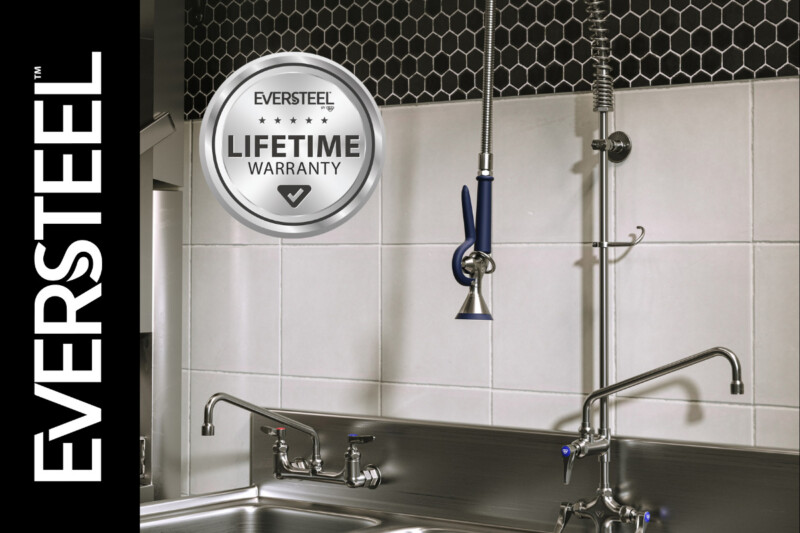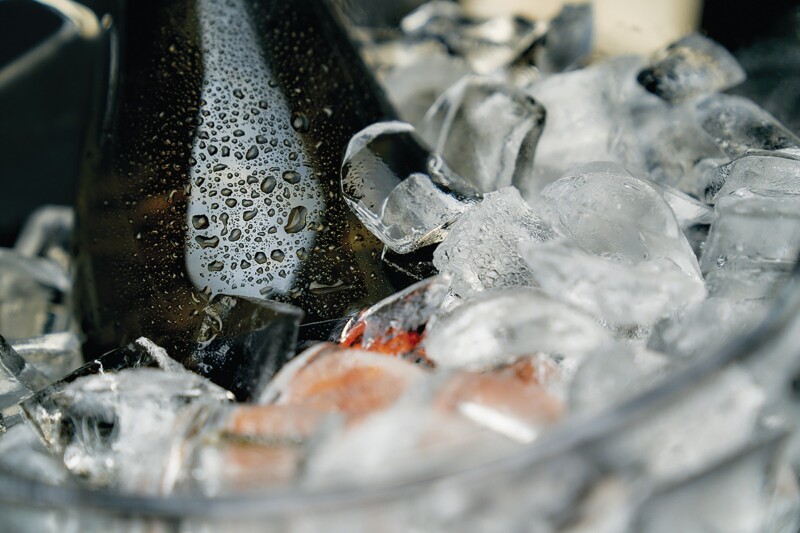Water Filtration Facts—Get to Know Reverse Osmosis Systems
The latest reverse osmosis systems adjust to fit hot beverage flavor profiles and waste less water.
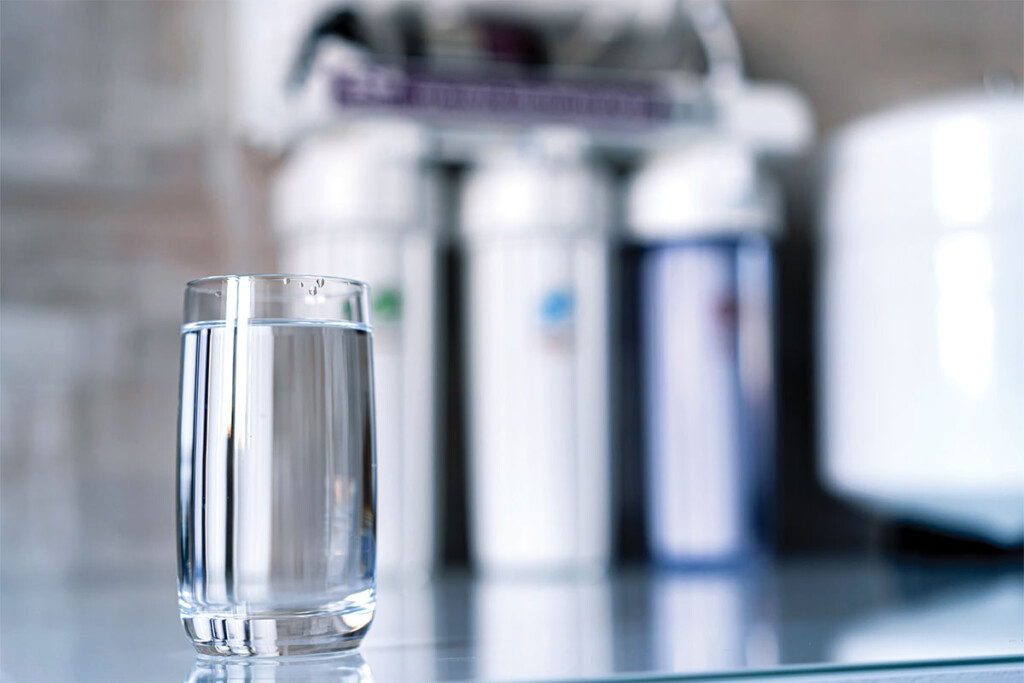
When we first learn about the composition of water in elementary school, it sounds simple: two hydrogen atoms and one oxygen atom. But there’s much more than that coming through your water pipes, including chlorine and chloramine, which municipalities add to disinfect water, and total dissolved solids, including calcium, magnesium, sodium and chlorides.
Not only can these contaminants affect water’s taste, but they also can play havoc on equipment, leading to corrosion and scale buildup. Steamers, combi ovens, espresso machines and other hot beverage equipment are particularly vulnerable. Most water filtration and treatment systems do not remove chlorides, which are highly corrosive in steamy conditions. While carbon filters virtually eliminate chlorine and chloramine, and water softeners reduce sources of scale buildup like calcium and magnesium, chlorides are more difficult to remove.
One manufacturer describes reverse osmosis systems as “a catch-all” and a “silver bullet” for reducing all types of contaminants.
That’s where a reverse osmosis system can help. RO systems use pressure to force water through a semipermeable membrane, separating TDS, including chlorides, from the water and flushing them down the drain. Prefilters remove other contaminants, including sediment, chlorine and chloramine, while also protecting the RO membrane. One manufacturer describes RO systems as “a catch-all” and a “silver bullet” for reducing all types of contaminants.
The rise in boilerless combi ovens has made RO systems more important than ever. Boilerless models typically spray water directly into the cooking cavity, producing “flash steam.” Dissolved minerals end up in direct contact with the stainless interior. Poor water quality and a lack of maintenance can transform the glimmering interior into a corrosive mess within months. Don’t expect the manufacturer to replace or repair your combi oven. If your water quality doesn’t meet the manufacturer’s requirements, your warranty may be voided. A replacement combi oven could easily cost you $15,000-$45,000, so it clearly pays to protect the equipment you have.
If you have a combi oven, steamer or hot beverage machine—and your chloride levels are above manufacturer specifications—an RO system might likely be your point-of-use water filtration system of choice.
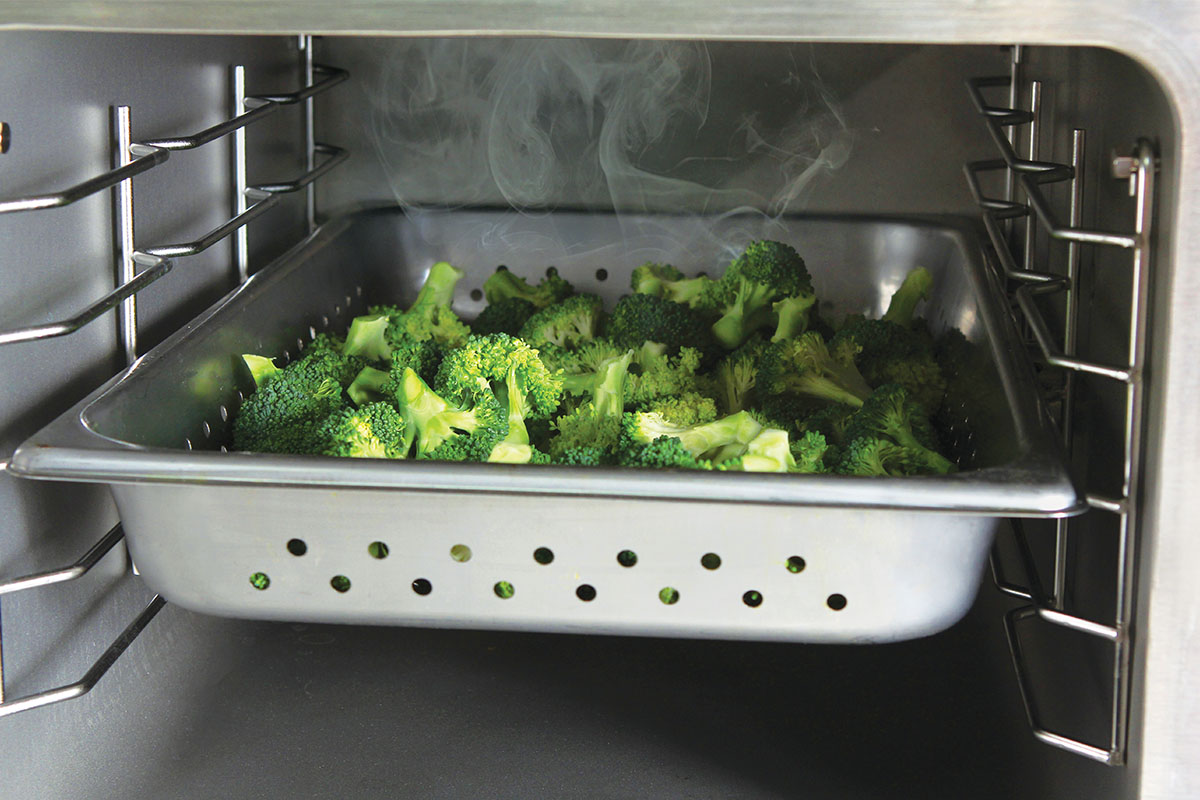
A bypass setting on some steam equipment-geared RO systems saves water amid cleaning cycles. Courtesy of 3M.
RO 101
A simple water test can help determine whether you need an RO system. Water filtration companies often offer free testing. Should the results indicate that you require an RO system, let these experts guide you through the technical nitty-gritty of selecting the appropriate system. Be prepared to answer the following questions:
Which pieces of equipment will be using an RO system?
Some RO systems are too effective for hot beverage applications, stripping out around 95% of the TDS, and altering the taste profile. The solution? In recent years, manufacturers have introduced models that offer the ability to blend back in some TDS to achieve the desired flavor. Newer models include a TDS blend valve that allows foodservice operators to precisely adjust TDS levels to their needs. Some models also feature mineral-addition cartridges that add in calcium and magnesium for improved coffee extraction.
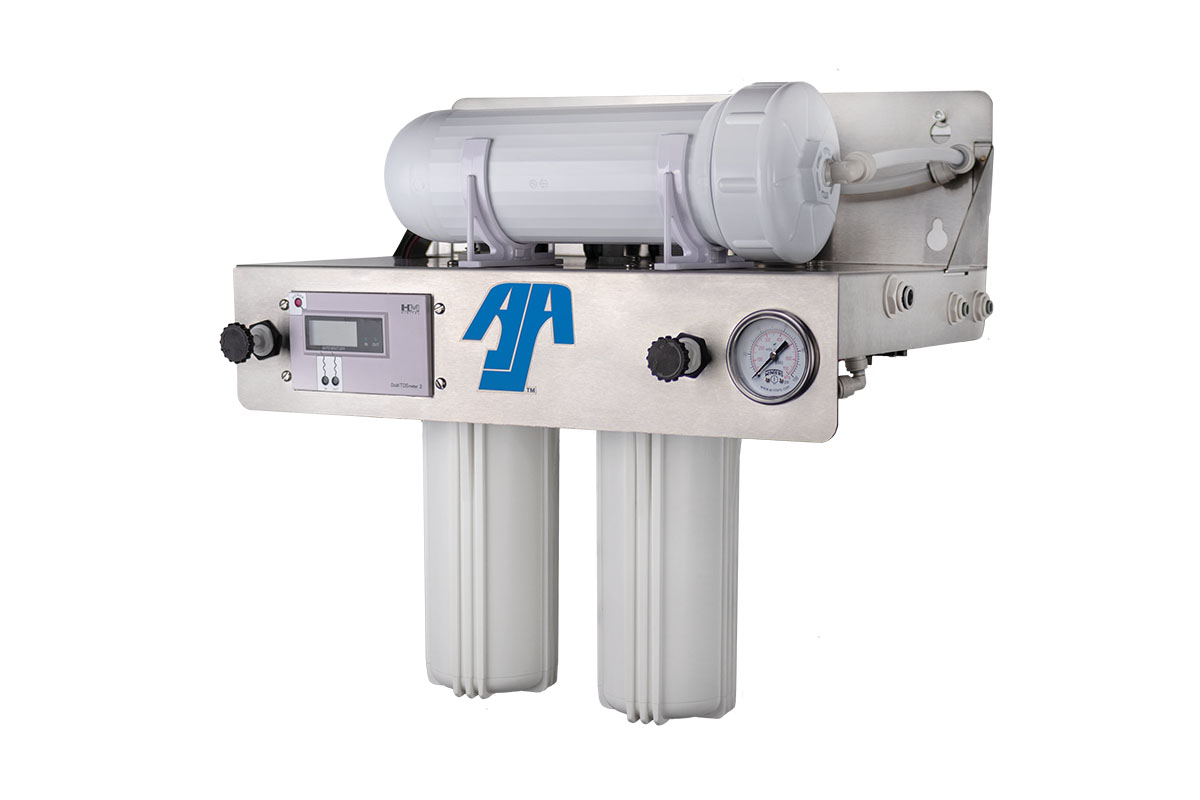
Some models’ TDS blend valves let operators precisely adjust hot-beverage flavor. Courtesy of Antunes.
If you’re purchasing an RO system for combi ovens or steamers, you typically won’t need the blend-in capability. Check the instruction manual to identify the water-quality requirements and whether a specific RO system is recommended.
What’s your water pressure?
The higher the water pressure, the higher the production rate. If your water pressure is low, purchase an RO with a booster pump to elevate the pressure. Booster pumps require electricity, which might require hiring an electrician to install an outlet. For newbuilds, consider your water needs early, so you can plan accordingly.
How much water does the equipment use?
This information is crucial to size the RO system appropriately. Determine your daily water needs as well as your specific needs during peak hours to help select the appropriate membrane size and storage tank.
The membrane size dictates how much water the system produces daily. The larger your daily water requirements, the larger the RO membrane you’ll need. Depending on membrane size, a base foodservice RO system might yield anywhere from 75 gallons of purified water per day up to about 1,000 gallons per day. The estimated daily production listed on the spec sheet is based on specific pressure and temperature conditions; be sure to read the fine print and compensate for any differences in your incoming water conditions.
Unfortunately, RO systems supply only a limited amount of purified water on demand. That’s where a storage tank fits in. Look at your peak water demands to determine storage needs. For example, a coffee shop might have high demand early in the day, and would need a large enough tank to supply the morning rush.
Buy too small of a tank, and it won’t meet your needs; too large, and you’ll overspend and expand the footprint unnecessarily. Beware that the total tank volume also may include compressed air. For example, one manufacturer specifies that its 20-gallon bladder tank would supply 13 gallons of water at an incoming pressure of 60 psi. Complicating matters, there are different types of tanks. At least one maker offers atmospheric tanks, which can store the same volume as a bladder tank in a smaller footprint.
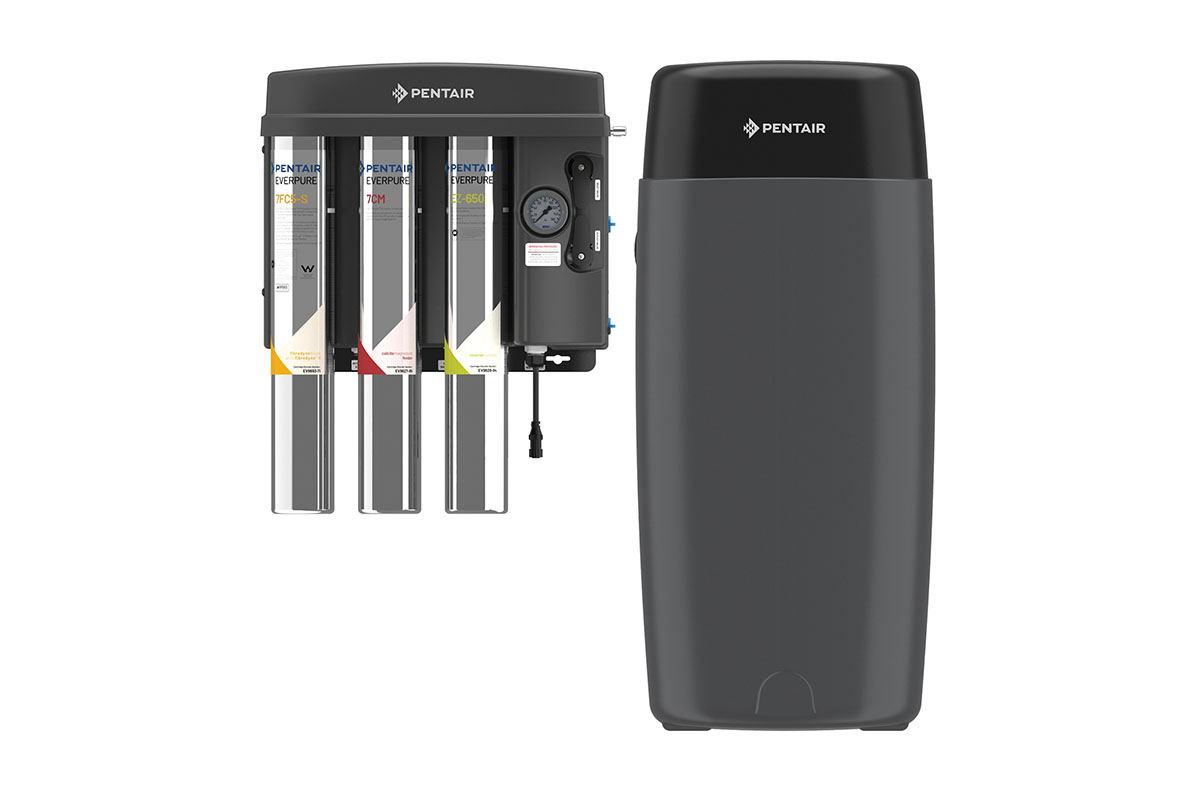
Atmospheric tanks (shown above) store more on-demand water in a smaller footprint, compared with bladder tanks. Courtesy of Pentair.
Do you have multiple foodservice locations with different needs?
Water quality can differ per location. Water needs also can vary, depending on how busy a location is and how many hours it’s open. Multiunit operators will need to decide whether to customize their systems by locale. Purchasing the same for every location is simplest, of course, but it might mean overinvesting in some cases, while in others, the system might not be sufficient. One approach is to purchase a modular system that allows for expandability. This allows an extra RO membrane to be attached to double water production where needed, and an extra prefilter to be used in areas where contaminant levels are especially high. Make sure that your RO systems meet any local water-related regulations.
MOVING FORWARD
The downside of RO is that it’s somewhat inefficient—the production is slow and large amounts of water are simply washed down the drain. Recent advances offer improved efficiency. One manufacturer boasts that its membranes provide higher production in a smaller footprint than in the past. That same company says that standard water recovery has increased from 25% to 50% on its RO systems. In other words, one gallon of water goes down the drain for each gallon recovered, rather than three gallons down the drain, as previously. Advances in prefiltration and the addition of permeate pumps have been key to improving water recovery rates.
Another water-saving innovation is the development of filtered bypass systems for cleaning combi ovens. During the cleaning cycle, water doesn’t reach the steamy temperatures that necessitate RO. With a bypass setting, the water still goes through a primary filter to remove sediment, chlorines and chloramines, but it doesn’t go through the RO process, saving water each cleaning.
INSTALLATION AND MAINTENANCE
Some makers have eased installation in recent years by introducing comprehensive kits with all the needed parts and fittings. If your installer uses the bypass mode during the install, make sure it’s turned off afterward, or you’ll be rendering the RO portion of the system useless.
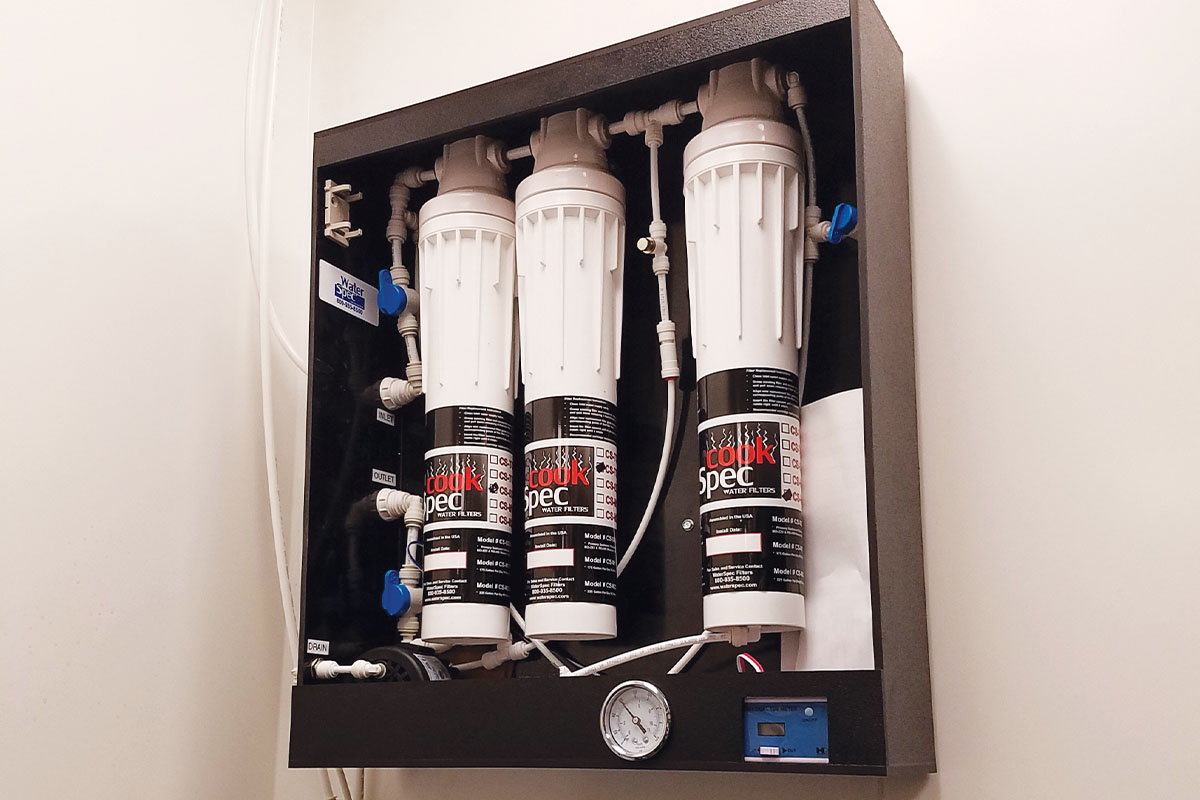
Quick-disconnect cartridges simplify RO system maintenance. Courtesy of Southeastern Filtration & Equipment Systems.
Follow manufacturer’s instructions on when to change prefilters and RO membranes. Several makers have upgraded to cartridges that twist on and off easily. At least one model features smart diagnostics that sense if a filter is clogged and needs to be changed, notifying the user with a warning light and shutting down the system as a precaution to prevent it from getting damaged. One manufacturer plans to roll out IoT-enabled monitoring later this year, which will alert operators remotely when maintenance is needed.
Water Wizards
These RO systems for steam-cooking applications
zap water contaminants to help extend equipment life.
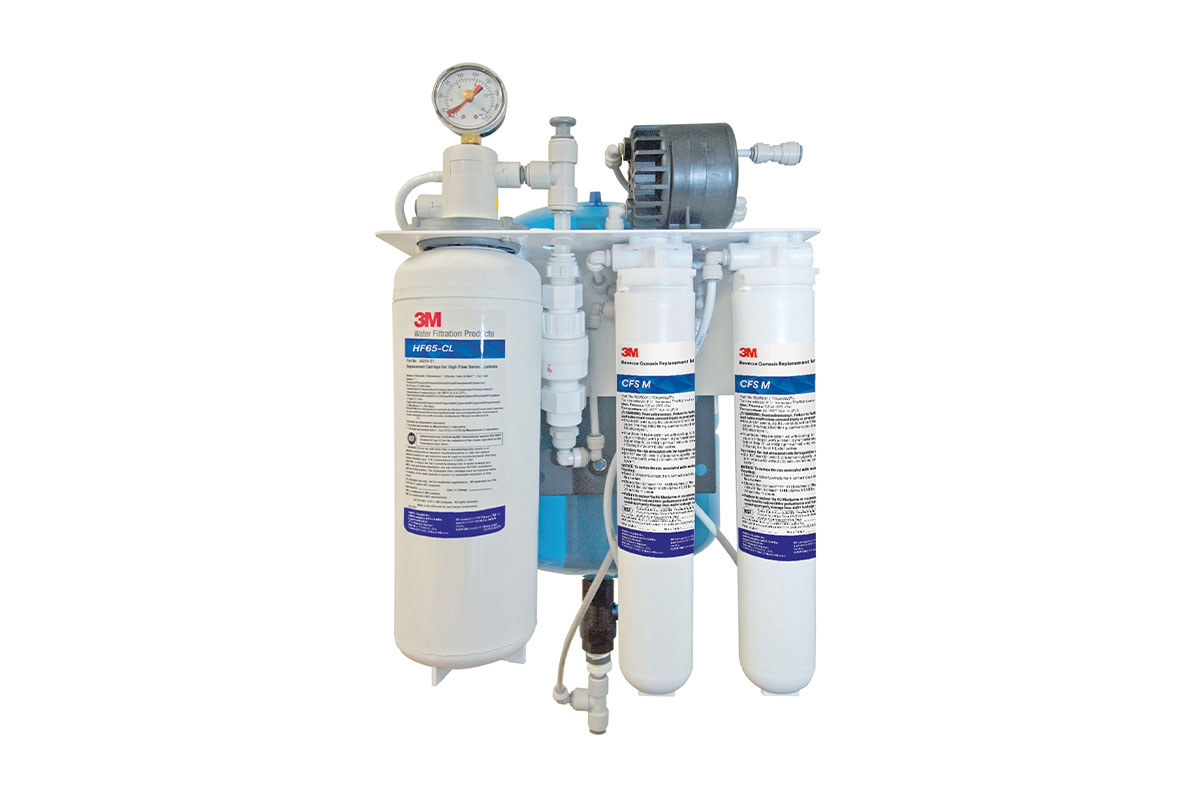
3M
Model: SGLP200-CL-BP Series
Capacity: Approximately 200 gal. per day; the series also includes a 100 gpd model
Features: A prefilter reduces particulate, chlorine taste and odor, and chloramines while the RO filter reduces TDS, hardness and scale from incoming water. An integrated pump operates on incoming water pressure versus electricity, and a 2-gal. water storage tank is included in this wall-mountable system.
Website: 3m.com/waterquality
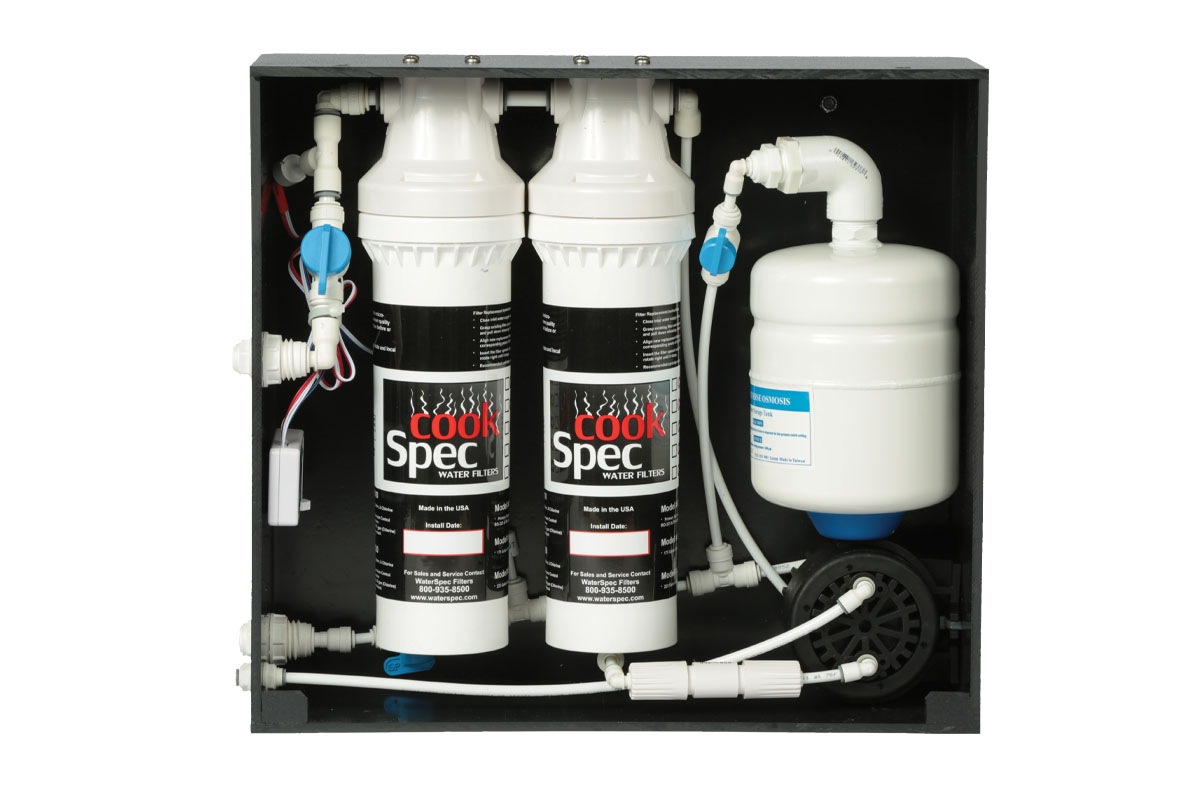
Southeastern Filtration & Equipment Systems
Model: CookSpec RO-175 NE
Capacity: Approximately 175 gpd; the series also includes 250 or 450 gpd models
Features: The system, designed for applications with a low water demand, comes standard with a ½-gal. tank delivering 32 oz. of water on-demand. A larger external storage tank can be specified, however.
Website: sfes.com
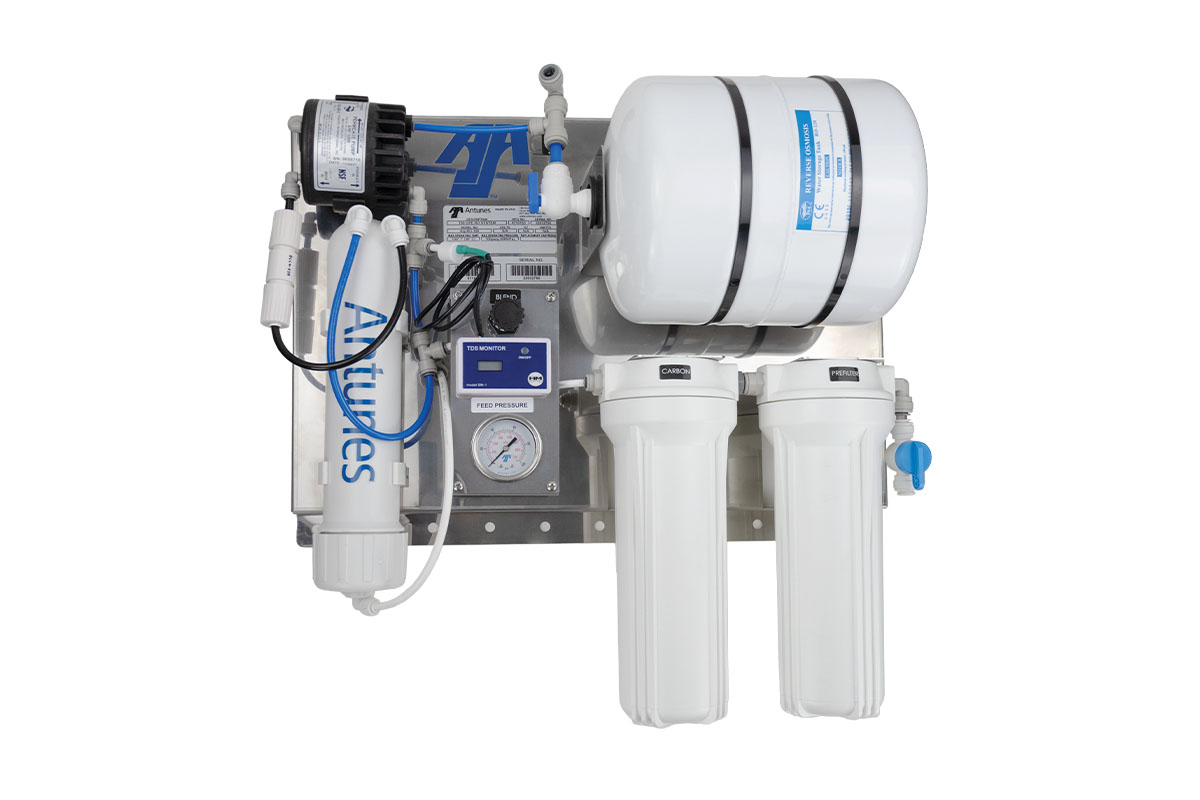
Antunes
Model: AQ-RO-100
Capacity: Approximately 100 gpd; the series also includes a 600 gpd model
Features: This wall-mounted system, developed for one of the maker’s flash steamers, can be used for combi ovens as well as coffee and tea equipment. A display panel keeps the operator informed on water TDS, and a blend valve allows adjustable TDS control.
Website: antunes.com
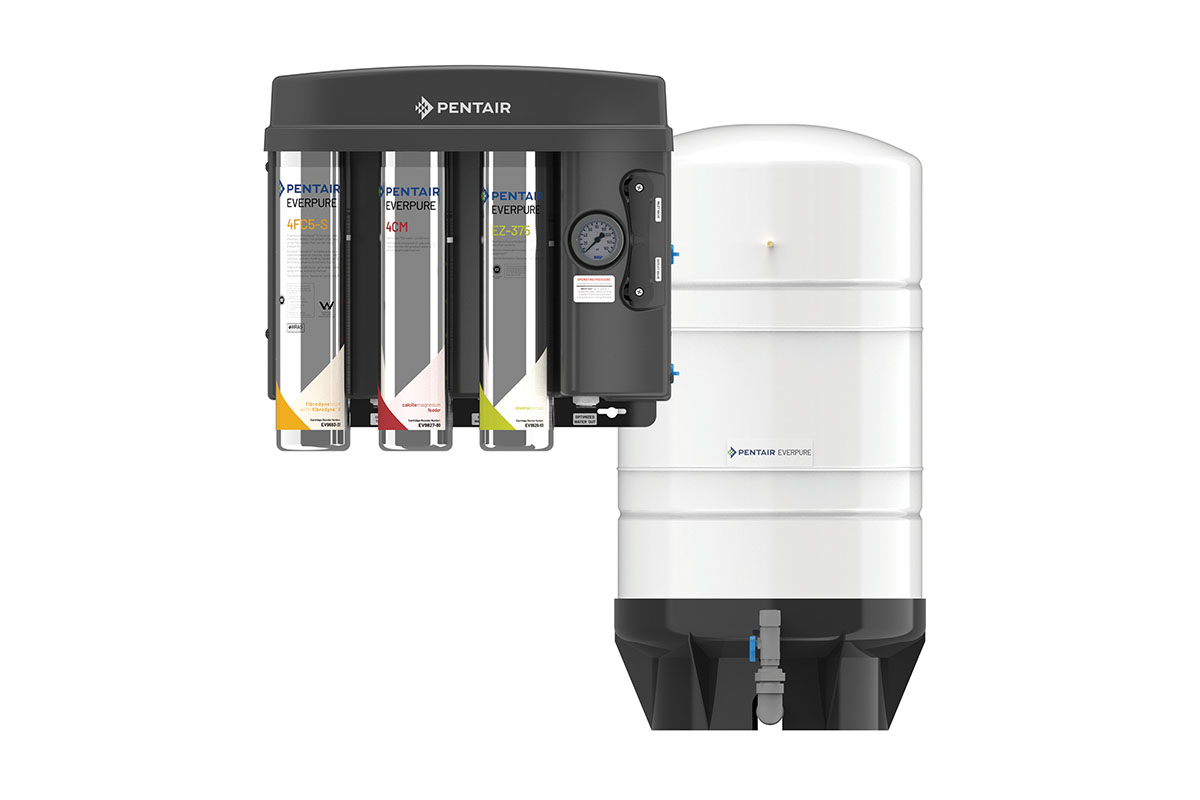
Pentair
Model: Everpure EZ-RO 375/16G
Capacity: Approximately 375 gpd; the series also includes 200 or 650 gpd models
Features: This high-efficiency RO membrane can save up to two times more water with a 50% recovery versus standard systems with 25% recovery, the maker says. Mount the unit, or opt for a floor stand bracket. A 16-gal. hydropneumatic tank is included.
Website: pentair.com/ez-ro
Editor’s Note: This product description has been updated for clarity.
RELATED CONTENT
- Advertisement -
- Advertisement -
- Advertisement -
TRENDING NOW
- Advertisement -
- Advertisement -
- Advertisement -

